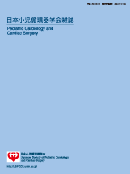Volume 30, Issue 5
Displaying 1-16 of 16 articles from this issue
- |<
- <
- 1
- >
- >|
Editorial
-
2014Volume 30Issue 5 Pages 489-490
Published: September 01, 2014
Released on J-STAGE: October 15, 2014
Download PDF (698K)
Reviews
-
2014Volume 30Issue 5 Pages 491-497
Published: September 01, 2014
Released on J-STAGE: October 15, 2014
Download PDF (1564K) -
2014Volume 30Issue 5 Pages 498-502
Published: September 01, 2014
Released on J-STAGE: October 15, 2014
Download PDF (936K) -
2014Volume 30Issue 5 Pages 503-513
Published: September 01, 2014
Released on J-STAGE: October 15, 2014
Download PDF (3802K) -
2014Volume 30Issue 5 Pages 514-522
Published: September 01, 2014
Released on J-STAGE: October 15, 2014
Download PDF (2345K) -
2014Volume 30Issue 5 Pages 523-533
Published: September 01, 2014
Released on J-STAGE: October 15, 2014
Download PDF (1362K) -
2014Volume 30Issue 5 Pages 534-542
Published: September 01, 2014
Released on J-STAGE: October 15, 2014
Download PDF (1288K)
Originals
-
2014Volume 30Issue 5 Pages 543-552
Published: September 01, 2014
Released on J-STAGE: October 15, 2014
Download PDF (1071K) -
2014Volume 30Issue 5 Pages 556-562
Published: September 01, 2014
Released on J-STAGE: October 15, 2014
Download PDF (1179K) -
2014Volume 30Issue 5 Pages 563-568
Published: September 01, 2014
Released on J-STAGE: October 15, 2014
Download PDF (2454K) -
2014Volume 30Issue 5 Pages 572-579
Published: September 01, 2014
Released on J-STAGE: October 15, 2014
Download PDF (1706K) -
2014Volume 30Issue 5 Pages 580-587
Published: September 01, 2014
Released on J-STAGE: October 15, 2014
Download PDF (1187K)
Case Report
-
2014Volume 30Issue 5 Pages 592-596
Published: September 01, 2014
Released on J-STAGE: October 15, 2014
Download PDF (1160K)
Editorial Comments
-
2014Volume 30Issue 5 Pages 553-555
Published: September 01, 2014
Released on J-STAGE: October 15, 2014
Download PDF (758K) -
2014Volume 30Issue 5 Pages 569-571
Published: September 01, 2014
Released on J-STAGE: October 15, 2014
Download PDF (762K) -
2014Volume 30Issue 5 Pages 588-591
Published: September 01, 2014
Released on J-STAGE: October 15, 2014
Download PDF (863K)
- |<
- <
- 1
- >
- >|
